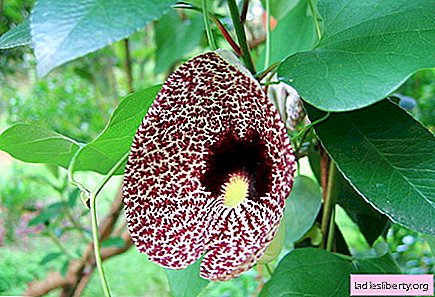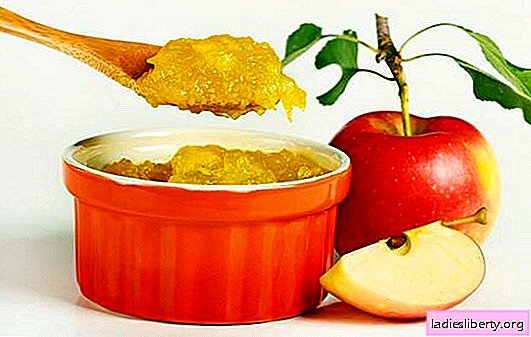
Kirkazon - a general description
Kirkazon (aristocholia) - a grassy or lignified perennial vine, characterized by branched rhizomes that smoothly turn into a stalk and whole, alternating, large leaves on long petioles. Large red-brown or small yellow flowers are arranged in bunches and singly in the axils of the leaves. Swollen at the base, a simple perianth gradually passes into a long tube ending in a long tongue-like outgrowth. The fruits of kirkazon are hanging pear-shaped capsules with small wrinkled seeds. Flowering falls in May-June.
Kirkazon - types and places of growth
Kirkazon grows along the shores of seas, rivers, flood meadows, in ravines, steppe zone and broad-leaved forests of the European part of Russia, in gardens and gardens - like a weed plant.
In addition to ordinary kirkazon, such species as the clematis, round, long, large-leaved and Manchurian are also popular.
Kirkazon - healing properties
Kirkcason contains a large amount of aristolokhin, which can stimulate the respiratory center, increase the amplitude of heart contractions, dilate blood vessels and have a diuritic effect. Halogen preparations of this plant have a detrimental effect on protozoa and bacteria.
With all its healing properties, scientists recently experimentally discovered that kirkazon affects the body carcinogenic and mutagenic, contributes to the development of Balkan nephropathy. It is recognized as capillary poison, from which hemorrhagic nephritis occurs. In Russia, the distribution of dietary supplements with kircazone is prohibited.
No matter what, traditional medicine uses it as before. In small doses, this plant is used for gout, the initial stages of hypertension, edema, pulmonary tuberculosis, neurasthenia, mental and physical overwork. It is believed that kirkason can reduce the body's susceptibility to all kinds of adverse environmental conditions. Compresses and lotions with its aqueous solution are prescribed for furunculosis, dermatomycosis, mastitis, pruritus and pyoderma. Tincture treat scabies. Smoke from smoldering seeds of aristocholia is recommended to be inhaled during epilepsy.
Kirkazon - dosage forms
For medical purposes, use the grass and roots of kirkazona. The roots are harvested in the autumn, after the seeds have fully ripened. They are dug up, get rid of branches and adhering earth, washed and dried under the sun. The grass is harvested during the flowering period, for this its tops are cut (up to 30 cm). Dry with a thin layer in a shaded area with good ventilation.
Roots and grass are used to make tinctures, infusions and decoctions. Also, the plant is applied externally in raw ground form.
Kirkazon - recipes
Infusion of kirkazon: teaspoon dry raw materials (grass or roots) pour 300 ml of water (100 ° C), insist for two hours and strain. Reception: 1/4 stack. 3 p. / Day before meals.
Tincture of kirkazon: 3 gr. dry herbs to insist for a week in 100 ml of vodka and strain. Reception: 20 to. 3-4 p. / Day.
Decoction of kirkazona for external use: tea. l dry chopped roots or 2 tbsp. l dry grass pour a glass of water (100 ° C) and cook for half an hour. It is used for washing and compresses.
Kirkazon - contraindications
The plant is poisonous! An overdose of drugs leads to the destruction of the intestinal mucosa and stomach. Upon contact with the plant, an allergic reaction is possible, similar to a chemical burn of I-II degree.
The use of kircazone is strictly prohibited for children, pregnant women, patients with renal and hepatic insufficiency, gastritis.
Treatment with kirkazona drugs is carried out only under the strict supervision of medical services!
Comments











